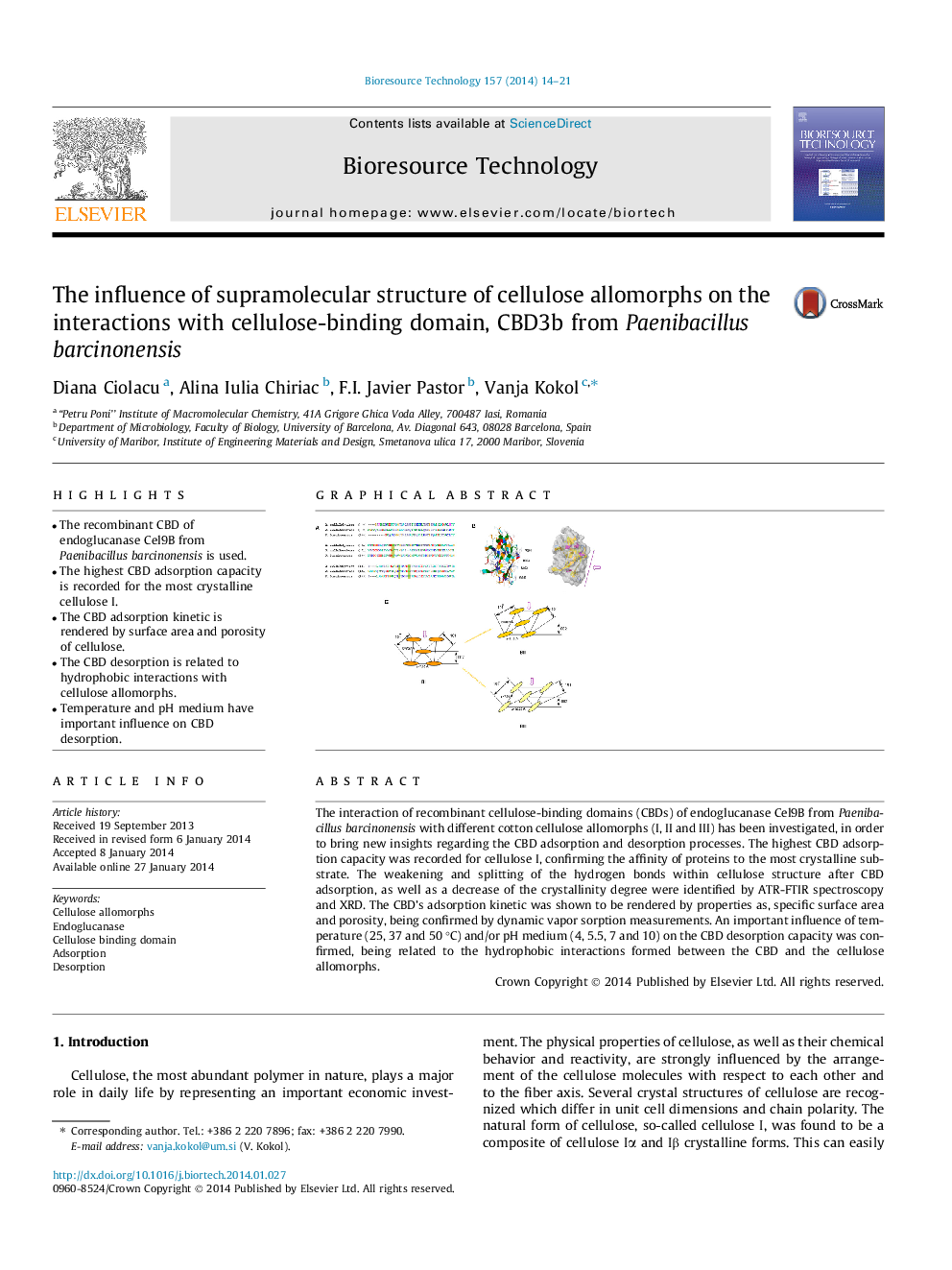| Article ID | Journal | Published Year | Pages | File Type |
|---|---|---|---|---|
| 680940 | Bioresource Technology | 2014 | 8 Pages |
•The recombinant CBD of endoglucanase Cel9B from Paenibacillus barcinonensis is used.•The highest CBD adsorption capacity is recorded for the most crystalline cellulose I.•The CBD adsorption kinetic is rendered by surface area and porosity of cellulose.•The CBD desorption is related to hydrophobic interactions with cellulose allomorphs.•Temperature and pH medium have important influence on CBD desorption.
The interaction of recombinant cellulose-binding domains (CBDs) of endoglucanase Cel9B from Paenibacillus barcinonensis with different cotton cellulose allomorphs (I, II and III) has been investigated, in order to bring new insights regarding the CBD adsorption and desorption processes. The highest CBD adsorption capacity was recorded for cellulose I, confirming the affinity of proteins to the most crystalline substrate. The weakening and splitting of the hydrogen bonds within cellulose structure after CBD adsorption, as well as a decrease of the crystallinity degree were identified by ATR-FTIR spectroscopy and XRD. The CBD’s adsorption kinetic was shown to be rendered by properties as, specific surface area and porosity, being confirmed by dynamic vapor sorption measurements. An important influence of temperature (25, 37 and 50 °C) and/or pH medium (4, 5.5, 7 and 10) on the CBD desorption capacity was confirmed, being related to the hydrophobic interactions formed between the CBD and the cellulose allomorphs.
Graphical abstractFigure optionsDownload full-size imageDownload as PowerPoint slide
